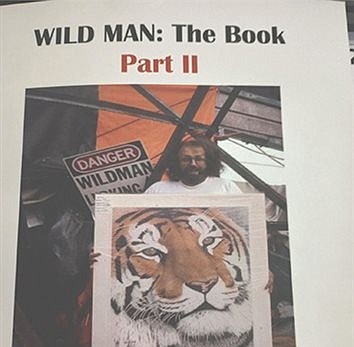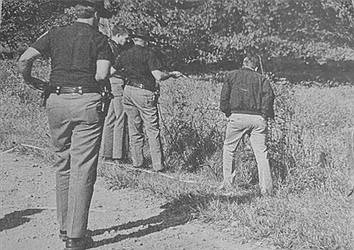Fentanyl Awareness Day sheds light on crisis
May 10, 2023 at 6:54 p.m.

Tuesday, May 9 was National Fentanyl Awareness Day. Here's what you need to know about the growing fentanyl crisis, beginning with the knowledge that this is indeed what one could consider a national and local crisis. In the past 12 months, 2,700 people have died by overdose in Indiana, mostly due to fentanyl poisoning. Since 2020, drug overdoses are now linked to more than 100,000 deaths a year nationally, with about two-thirds of them fentanyl-related. That’s over 10 times more drug deaths than in 1988, at the height of the crack epidemic.
One year ago, on the first National Fentanyl Awareness Day, DEA opened the Faces of Fentanyl exhibit at their headquarters—a wall in DEA’s West Building that displays the photos of those who lost their lives to fentanyl poisoning. The memorial started with 100 photos; over the past year, Americans from across the country have sent DEA more than 5,000 photos. It reflects the reality that fentanyl is killing Americans from all walks of life, in every state and community in this country. The youngest person on the wall is 17-months-old. The oldest is 70-years-old.
Fentanyl, a synthetic opioid, is a potent painkiller that is 50 times more powerful than heroin and 100 times more powerful than morphine. The drug is intended to be prescribed for patients with debilitating or chronic pain, or conditions like cancer. Fentanyl is highly addictive, moreso than users can predict, and can cause severe physical and psychological dependence. The drug affects the central nervous system, leading to respiratory depression, slowed heart rate, and decreased blood pressure. These effects can result in coma, permanent brain damage, and death.
Fentanyl mostly arrives in the U.S. from Mexico and is mixed into supplies of other drugs, including cocaine, heroin, methamphetamine and counterfeit pain and anxiety pills, meaning that while some users seek out the drug recreationally, others don’t even know they’re taking it.
Ingesting just 2 milligrams of fentanyl can be fatal. One gram, an amount the size of a paper clip, could therefore contain 500 lethal doses.
It’s terrifying facts like these that are forcing lawmakers to crack down.
At work is a movement toward harsher penalties for dealers, the legalizing of materials to test drug supplies for fentanyl, and the availability /distribution of naloxone (Narcan), a drug that can reverse overdoses.
U.S. Senator Todd Young (R-Ind.) and Senate colleagues introduced two new bills to help combat the fentanyl epidemic affecting communities in Indiana and across the nation. The Halt Lethal Trafficking (HALT) Fentanyl Act, introduced by Senators Young, Bill Cassidy, M.D. (R-La.), and Roger Marshall (R-Kan.), would make permanent the temporary classification of fentanyl and fentanyl analogs as Schedule I of the Controlled Substances Act (CSA). This permanent classification would provide law enforcement with the tools they need to better combat this drug. Another bill called The Cooper Davis Act would target drug sales on social media. The bill is in honor of Cooper Davis, a 16-year-old Kansas teen who tragically lost his life after taking a counterfeit pill laced with fentanyl in August 2021. It was later discovered that a drug dealer had solicited Davis through the popular social media platform Snapchat. Under this new legislation, social media companies and service providers must take on a more active role against the illegal sale and distribution of fentanyl and other illicit drugs on their platforms.
“Fentanyl is devastating communities in Indiana and across our nation, and we need to do more to address the flow of these drugs, including distribution via social media, that are poisoning young Americans. Our bipartisan Cooper Davis Act will give law enforcement officials more tools to combat the illegal sale and distribution of drugs,” said Senator Young.
Union County, talk to your kids, your parents, your friends and loved ones about this problem. Awareness is a key weapon in this battle.
Latest News
E-Editions
Events
Tuesday, May 9 was National Fentanyl Awareness Day. Here's what you need to know about the growing fentanyl crisis, beginning with the knowledge that this is indeed what one could consider a national and local crisis. In the past 12 months, 2,700 people have died by overdose in Indiana, mostly due to fentanyl poisoning. Since 2020, drug overdoses are now linked to more than 100,000 deaths a year nationally, with about two-thirds of them fentanyl-related. That’s over 10 times more drug deaths than in 1988, at the height of the crack epidemic.
One year ago, on the first National Fentanyl Awareness Day, DEA opened the Faces of Fentanyl exhibit at their headquarters—a wall in DEA’s West Building that displays the photos of those who lost their lives to fentanyl poisoning. The memorial started with 100 photos; over the past year, Americans from across the country have sent DEA more than 5,000 photos. It reflects the reality that fentanyl is killing Americans from all walks of life, in every state and community in this country. The youngest person on the wall is 17-months-old. The oldest is 70-years-old.
Fentanyl, a synthetic opioid, is a potent painkiller that is 50 times more powerful than heroin and 100 times more powerful than morphine. The drug is intended to be prescribed for patients with debilitating or chronic pain, or conditions like cancer. Fentanyl is highly addictive, moreso than users can predict, and can cause severe physical and psychological dependence. The drug affects the central nervous system, leading to respiratory depression, slowed heart rate, and decreased blood pressure. These effects can result in coma, permanent brain damage, and death.
Fentanyl mostly arrives in the U.S. from Mexico and is mixed into supplies of other drugs, including cocaine, heroin, methamphetamine and counterfeit pain and anxiety pills, meaning that while some users seek out the drug recreationally, others don’t even know they’re taking it.
Ingesting just 2 milligrams of fentanyl can be fatal. One gram, an amount the size of a paper clip, could therefore contain 500 lethal doses.
It’s terrifying facts like these that are forcing lawmakers to crack down.
At work is a movement toward harsher penalties for dealers, the legalizing of materials to test drug supplies for fentanyl, and the availability /distribution of naloxone (Narcan), a drug that can reverse overdoses.
U.S. Senator Todd Young (R-Ind.) and Senate colleagues introduced two new bills to help combat the fentanyl epidemic affecting communities in Indiana and across the nation. The Halt Lethal Trafficking (HALT) Fentanyl Act, introduced by Senators Young, Bill Cassidy, M.D. (R-La.), and Roger Marshall (R-Kan.), would make permanent the temporary classification of fentanyl and fentanyl analogs as Schedule I of the Controlled Substances Act (CSA). This permanent classification would provide law enforcement with the tools they need to better combat this drug. Another bill called The Cooper Davis Act would target drug sales on social media. The bill is in honor of Cooper Davis, a 16-year-old Kansas teen who tragically lost his life after taking a counterfeit pill laced with fentanyl in August 2021. It was later discovered that a drug dealer had solicited Davis through the popular social media platform Snapchat. Under this new legislation, social media companies and service providers must take on a more active role against the illegal sale and distribution of fentanyl and other illicit drugs on their platforms.
“Fentanyl is devastating communities in Indiana and across our nation, and we need to do more to address the flow of these drugs, including distribution via social media, that are poisoning young Americans. Our bipartisan Cooper Davis Act will give law enforcement officials more tools to combat the illegal sale and distribution of drugs,” said Senator Young.
Union County, talk to your kids, your parents, your friends and loved ones about this problem. Awareness is a key weapon in this battle.





